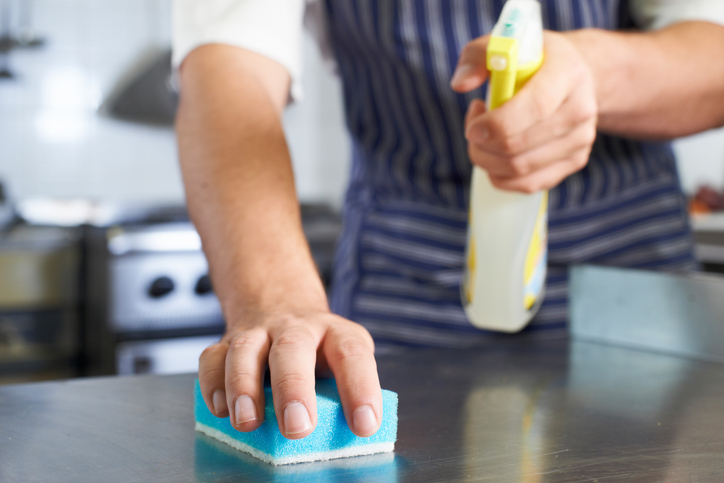Boston-area residents were shocked and horrified this past November when the manager at a Buffalo Wild Wings died, and 11 others were injured, in what appeared to be a freak accident involving cleaning products.
While some details are still unclear, the accident appeared to be caused by an employee accidentally mixing an ordinary sanitizing agent containing acid (Scale Kleen) with an ordinary cleaning product containing bleach (Super 8). It’s a mistake anyone could make, without proper training.
In the course of ordinary use, the two chemicals won’t normally come in contact with each other–one is used on food processing equipment, and one is used on floors, usually at different times of the day. However, when they do come in contact, the bleach reacts with the acid to create hydrochloric acid. Hydrochloric acid, which is a gas at room temperature, is so deadly that it has been used in chemical warfare.
The incident at the Buffalo Wild Wings should serve as a wake-up call to employers and managers in all industries. Almost every business today uses chemicals in a variety of capacities. Many of these chemicals may be harmless when used correctly, but deadly when mixed or incorrectly applied.
To help keep your employees safe and healthy, take these five steps:
- Post accurate and up-to-date safety data sheets
- Train your employees in correct use of chemicals
- Review your chemical safety procedures and data periodically
- Emphasize the importance of safety to your employees
- Consider hiring an environmental health and safety partner
1. Post Accurate Safety Data Sheets
Chemical manufacturers are required to label their products with detailed product safety data sheets (SDS). You, as the employer, are required to post these where employees can easily and readily access them. Periodically review to ensure that you have posted the latest safety data sheets for all potentially hazardous chemicals on your site.
2. Train Your Employees
Make sure every employee knows, from day one, where the safety data sheets are posted, and how to read them. Familiarize them with each section of the sheets, and show them where to find information about how to use the product, dangerous combinations and uses to avoid, and how to manage any accidents with the product. Give them hands-on training in correct use of each chemical they will regularly interact with.
3. Review Safety Procedures and Data Periodically
Chemical formulations and safety knowledge changes over time. Set a schedule to review your safety data sheets and procedures on at least an annual basis, and update your employees with any changes. Include a review of all hazardous materials on site to ensure you have posted sheets for all of them.
4. Emphasize the Importance of Safety
Employees can become complacent about safety if they view safety procedures as merely extra tasks to perform. Emphasize periodically that mistakes and accidents can have catastrophic consequences. You might want to share the Buffalo Wild Wings story as a cautionary tale, and remind them periodically that their safety and the safety of their coworkers is at stake.
5. Consider Hiring an Environmental Health and Safety Partner
Chemical interactions are only one possible hazard in any given workplace. Slips, trips, and falls are a common cause of injury. Smoke, CO2, high concentrations of CO2, mold exposure, asbestos in the air, and many other contaminants can go unseen and unrealized until there is an incident.
A trusted environmental health and safety partner can help you develop an effective health and safety plan for your organization that protects your employees and keeps your costs down. We at GLE Associates would love to be that partner.



